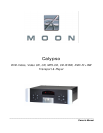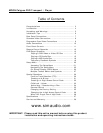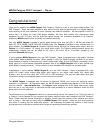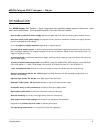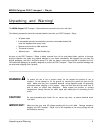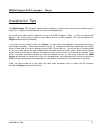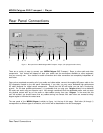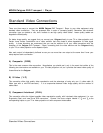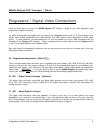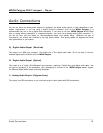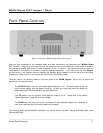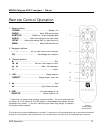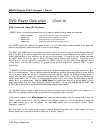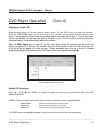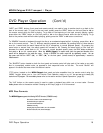
MOON Calypso DVD Transport / Player
Introduction
Your MOON Calypso DVD Transport / Player incorporates many significant design features to achieve its “world
class” level of performance. This is an abbreviated list of the more important features:
Dual toroidal transformer power supply dedicated to digital (SDI, DVI, DAC) and analog (audio & video) circuitry.
Ultra-fast switch-mode power supply for controller circuitry and drive mechanism, housed in an integral shield to
prevent any degrading noise leakage.
Up to 16 stages of voltage regulation depending on installed options.
A hybrid power supply system, in which analog and switch-mode power supplies are used where they are at their
best. Completely separate, fully regulated supplies for the drive mechanism, digital circuits and analog circuits. (16
stages of regulation in total).
An integral shield for the Switch-Mode Power supply, ensuring no high frequency noise will interfere with either the
audio or video signals.
A variety of audio formats supported include MPEG1 (Video CD), MPEG2 (DVD), MP3 audio files, Linear PCM Audio
(CD), Dolby Digital
5.1 (AC-3), Dolby Digital
Surround EX, DTS Digital Surround 5.1 and DTS-ES 6.1.
10-bit oversampled video with active current-to-voltage converter and phase accurate analog filtering.
Optional audiophile-grade 24-bit/192kHz digital-to-analog converter with 8X oversampling digital filter for 2
channel analog output.
Optional high quality DVI Output for a 480p digital video connection.
SRS Labs TruSurround 3D surround software for optional 2-channel audio output.
A complete array of video connectors, including a SDI output (Digital Video)
Rigid chassis construction to minimize the effects of external vibrations.
Accurate matching of the very finest high quality electronic components.
Pure copper circuit board tracings with extremely low impedance characteristics.
Designed to be powered up at all times for optimal performance.
Low operating temperature for a longer than normal life expectancy.
____________________________________________________________________________________
Introduction 4



